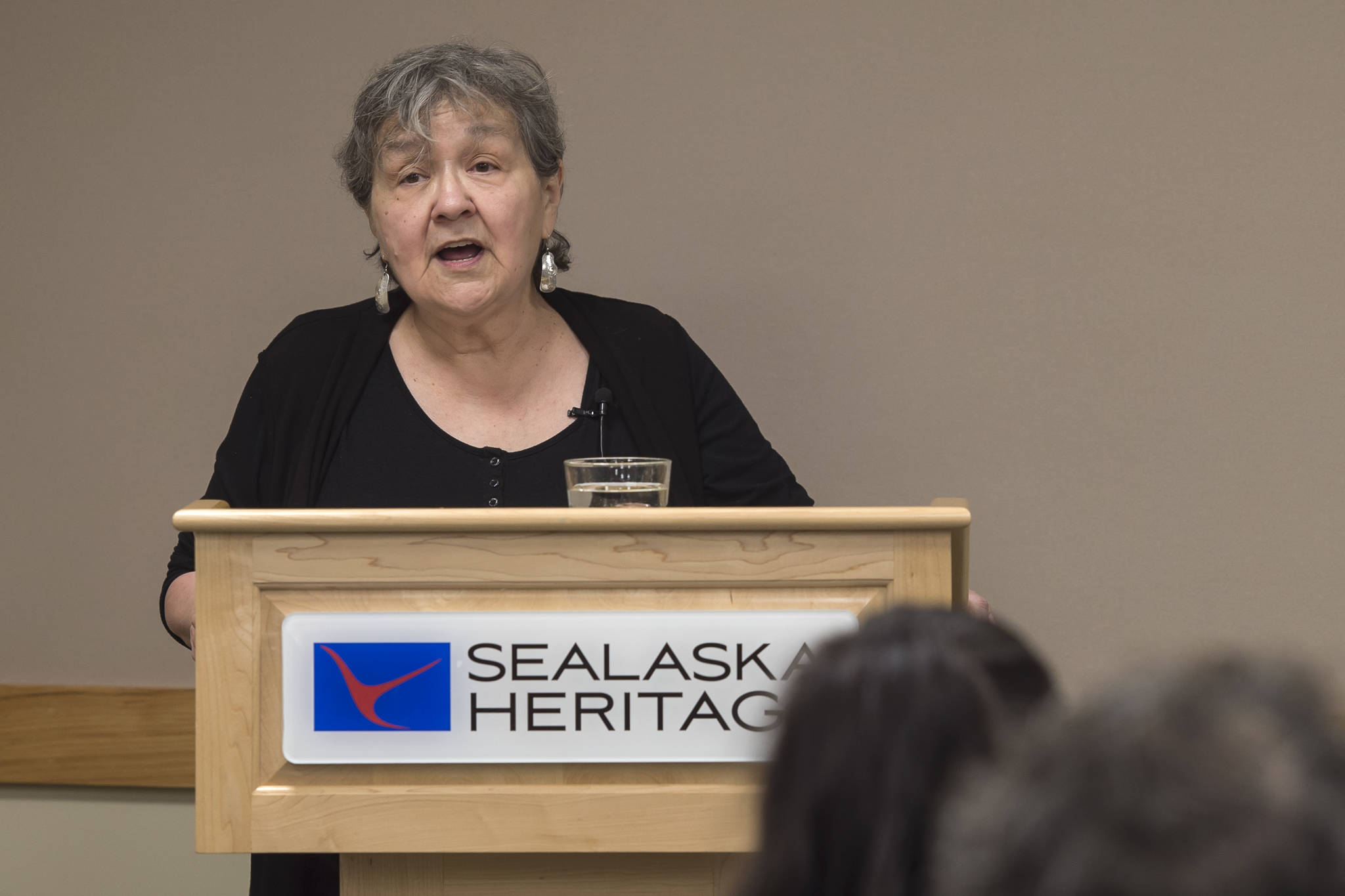Names given by Alaska Natives to people and places are far from arbitrary.
Ernestine Hayes, Alaska Writer Laureate and professor at University of Alaska Southeast, spoke Tuesday afternoon at Sealaska Heritage Institute’s Walter Soboleff Building about the importance and power of Native names. The lecture was part of an Alaska Native Heritage Month series.
“It’s no wonder then that changing person and place names remains such an important part of colonization,” Hayes said.
One local name Hayes singled out as particularly grievous is the Willoughby District, an area around Egan Drive and Willoughby Avenue that includes the site of the old Indian Village.
That is where Hayes grew up, and it features prominently in her book, “Blonde Indian.”
[Book review of “Blonde Indian”]
“Join me in resisting the colonial urge to name that historic district … after a man named Willoughby,” Hayes said.
Hayes characterized Richard Willoughby, the avenue’s namesake, as a trickster who made money selling fraudulent postcards that supposedly depicted a distant Russian village dubbed “Silent City.”
Willoughby claimed to have photographed the reflection of the city during a visit to Muir Glacier at Glacier Bay and sold postcards of the image. The photo actually depicted a city in England.
While Hayes objected to the colonizing names of the glacier and bay, she especially advocated for a name that pays homage to the history of the village rather than Willoughby — especially in light of the role Willoughby Avenue played in separating Native people from the sea.
“Is it not time to stop erasing Native people, erasing Native history, erasing Native names?” Hayes asked. “Let us not look back with admiration, but forward with hope.”
Hayes asked Chuck Smythe, history and culture director for SHI, what could be done to lobby for a name change, and if there is a more fitting name for the Willoughby District that he would recommend.
Smythe said he would recommend attending Wayfinding Project meetings that are part of an effort to update signage, and historic preservation plan meetings.
“The city has been responsive,” Smythe said. “I know there’s reservations about naming it the Willoughby District.”
He said things are “pretty open ended” regarding a replacement name, but said early maps of the area label it the Auke Village.
“Auke Village District, let’s do it,” Hayes said.
Former Juneau Mayor Bruce Botelho, who was in the audience, said if the community coalesced around a few potential names, current elected officials would likely be receptive.
SHI president Rosita Worl said she was thankful for the openness to change displayed by elected officials and Juneau residents and cited the recent naming of the space at Front and Seward Streets “Heritage Square” as an example.
“I do want to thank the residents for coming around,” Worl said.
Family names
In addition to speaking about natural landmarks and geographical areas, Hayes shared the history of her Tlingit name.
Hayes gave her name as Saankalaxt’.
She was named for her biological grandmother, but had Hayes’ family waited a few weeks she might have been named for a different relative.
As a child, Hayes said she had such a voracious appetite — it was determined by her family that she was her great-grandmother, Kaa du stéen, who could not eat near the end of her life, returning to earth.
“I was not born with a recognizable mark,” Hayes said. “The scars we are born with are not easily seen.”
However, observable marks gave Hayes’ mother her name. Hayes said her mother appeared to have indentations in her ear that resembled a piercing, so she was named Kaaxkwéi, after a maternal ancestor.
Names also are passed along the white side of Hayes’ family too, and Hazel, Maxine, Benjamin and Ernest are all family names.
“Names not only establish family relationships and our relationship with others as individuals, but also our relationship with our groups such as clans and places,” Hayes said.
• Contact arts and culture reporter Ben Hohenstatt at (907)523-2243 or bhohenstatt@juneauempire.com.

